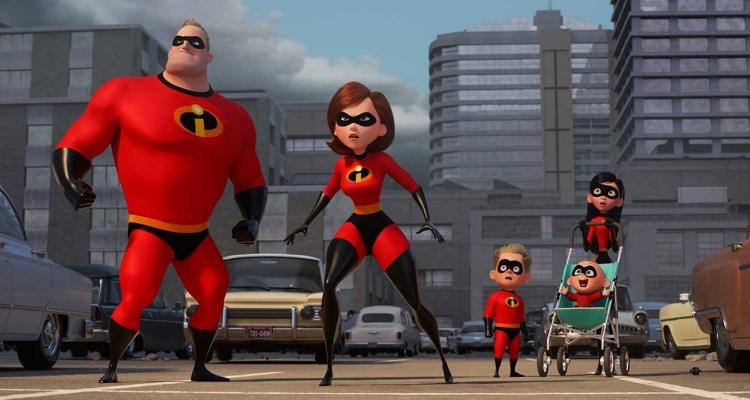EMERYVILLE, CA – One aspect of CG animation that never truly gets the praise it deserves is the incredibly detailed production design that often goes into each film. It’s mostly because of a perception that because animated films are digitally fashioned that somehow less work must go into it. Sure, there are teamsters spending hours building physical sets for non-animated films as we speak, but it’s a rare production that doesn’t use some pre-existing locale or building in some capacity. Unless it’s a sequel, an animated film traditionally creates it’s world almost entirely from scratch. And, yes, in some ways it’s apples and oranges, but they both start with a production designer conceptualizing the space. For Ralph Eggleston and his crew at Pixar fashioning the buildings and sets of Brad Bird’s “Incredibles 2” poised a unique challenge in this respect.
“What a production designer does and what an art director does is we design the overall look of the film and the specifics,” Eggleston, who credits include “WALL-E” and “Inside Out,” says. “And what we do is build corrals of visual information that we hope everyone can kind of understand and kind of contribute to. We have to design our actors and the environment. Then we work with sets to make sure they can be brilliant at implementing them. And costumes, and costume changes, textures throughout the entire film, and lighting. Again, with all of this we’re just the starting point. We have lots of other folks in other departments that influence this and work with us.”
Brad Bird on “Incredibles 2” and Iron Giant in “Ready Player One” [Interview]
The sequel to the Oscar-winning “The Incredibles” is being released a little under 14 years after the original, but the story picks up exactly where the first film ends. That means the super-powered Parr family of Mr. Fantastic, Elastigirl, Violet and Dash are about to deal with the villainous Underminer as he attacks Metro City. Eventually, with their original suburban home destroyed in the first movie, the Parr family lives in safari-themed hotel for three months. That is until a new benefactor puts them up in a spare, gorgeous mid-centery modern dwelling that features interior water falls, a gorgeous view and distinctive Terrazzo flooring (more on that later). Bird has said he wants the “Incredibles” movies to feel slightly timeless, but their ’50s and ’60s design aesthetic is obvious.

“It’s actually easy to find really cool looking mid century architecture. It’s harder to find stuff that is less identifiable, you know? Little elements here and there like breeze blocks, repeated patterns, and things like that, so it’s a lot of fun,” Eggleston says. “Different artists and different photographers [such as Ezra Stoller] and different designers influenced this every step of the way. The one thing I particularly appreciated about Ezra Stoller’s photography was the world of ‘The Incredibles’ is not about small. It’s not about detail. It’s about big and the median. The small details are really kind of the characters and the texture is where we need them most to tell the story and advance the story.”


